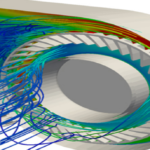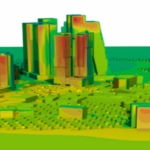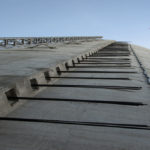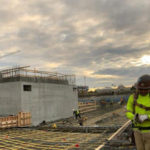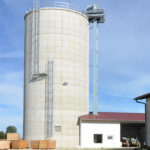Blog
Calculation Methods Of Earthquake Performance Analysis

Earthquake performance analysis, together with engineering approaches, plays an important role in ensuring the safety of structures against earthquakes, preventing second-order effects, ensuring lateral stiffness and designing in accordance with the regulations.
In performance-based design, linear elastic calculation methods based on strength and nonlinear inelastic calculation methods based on strain and displacement are used to determine the earthquake performance of existing and retrofitted buildings.
Linear calculation methods are not sufficient because they cannot accurately model the deformations in the structure and the plasticity of the joints. Therefore, linear analyses are usually required to perform nonlinear analyses for the detailing of the retrofit design and making final decisions. However, nonlinear analyses should be used for detailing the retrofit design and making final decisions.
In the Equivalent Earthquake Method, the element stiffnesses and section properties of the structure are determined and the internal forces and displacements are calculated by linear distribution of horizontal earthquake loads and the behaviour of the structure under these loads by applying stiffness.
Nonlinear calculation methods are used to analyse the plasticity and deformation capacities of structures when they exceed elastic limits. These methods are critical for predicting the actual behaviour of structures more accurately. Nonlinear analyses help to determine the damage potential, energy absorption capacity and performance levels of structural elements.
Nonlinear calculation methods are critical for accurately assessing the earthquake performance of structures and planning retrofitting strategies. Methods such as pushover analysis and time-history analysis help to determine retrofitting requirements by examining the elastic and plastic behaviour of structures in detail.
- In the Equivalent Earthquake Method, element stiffnesses and section properties of the structure are determined and internal forces and displacements are calculated by linear distribution of horizontal earthquake loads and the behaviour of the structural elements under these loads using the stiffness matrix.
- Pushover analysis is a widely used nonlinear static analysis method to evaluate the performance of structures under earthquake effects.
In design by deformation applied in earthquake performance analysis, the capacity curve of the structural element shows the elastic and plastic behaviour of the structure and displacement is generated by horizontal load. Thus, it enables the determination of different performance levels such as immediate use, life safety, pre-collapse. As a result, it shows the damage status of the structural elements.
- Modal Combining method is a method that examines the dynamic behaviour of the structure by considering the earthquake response spectrum, natural vibration modes and frequencies according to the data obtained from the structure. Accordingly, modal analysis is performed and the whole response of the structural elements is calculated by using SRSS, CQC methods.
- Time-History Analysis is a nonlinear calculation method that examines the time-dependent behaviour of structures under the data according to real earthquake records as specified by the regulation and should be used for the evaluation of structural performance. is the most detailed analysis method. Deformations, plastic joint formations and energy absorption capacities of the structure at different time points are analysed. The earthquake records to be used in earthquake performance analyses are selected in accordance with the seismic hazard assessments specific to the region where the structure is located. Accordingly, the moment and shear forces generated in the existing structural elements provide a detailed evaluation of the structural performance.
Latest Blog
-
Why Are Reinforced Concrete Static Projects Important?
27 March 2025 -
Why Are Steel Static Projects Important?
21 March 2025 -
What is Acoustic CFD Analysis?
4 March 2025 -
Fire Analysis with CFD: Fire Safety and Simulation Technologies
25 February 2025 -
What Is A Static Project And Why Is It Important?
19 February 2025 -
Silo Static Project
29 July 2024 -
Methods Used In Earthquake Performance Analysis
4 July 2024 -
Reinforced Concrete Calculation Static Report
31 January 2024 -
Steel Calculation Static Report
31 January 2024 -
What Is CFD Analysis?
22 December 2023 -
What Are The Benefits Of CFD Analysis?
22 December 2023 -
Silo Reinforcement with Post-Tensioning Method
26 September 2023 -
Post Tensioning Method in Cantilever Slabs
4 September 2023 -
Post-Tensioning Application In Reinforced Concrete Silos
22 August 2023












